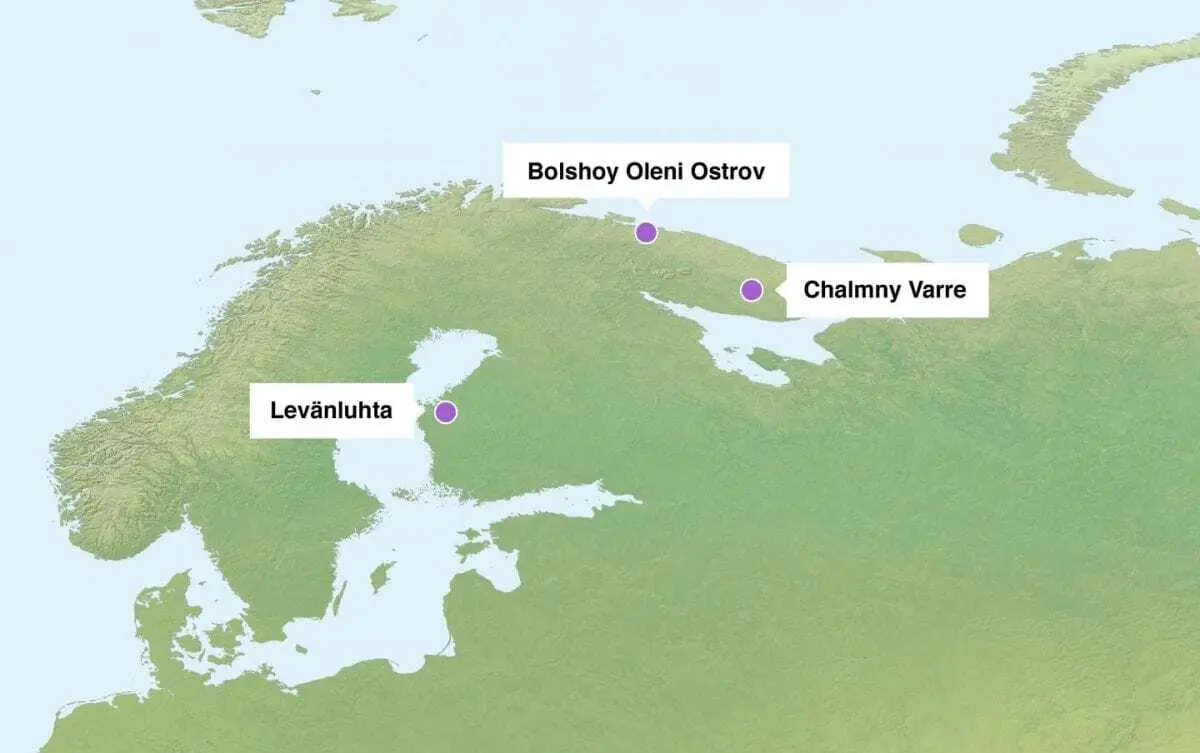Researchers from the Max-Planck-Institute for the Science of Human History and the University of Helsinki have analyzed the first ancient DNA from mainland Finland.
Ancient DNA was extracted from bones and teeth from a 3,500 year-old burial on the Kola Peninsula, Russia, and a 1,500 year-old water burial in Finland. The results reveal the possible path along which ancient people from Siberia spread to Finland and Northwestern Russia.
Researchers found the earliest evidence of Siberian ancestry in Fennoscandia in a population inhabiting the Kola Peninsula, in Northwestern Russia, dating to around 4,000 years ago. This genetic ancestry then later spread to populations living in Finland. The study also found that people genetically similar to present-day Saami people inhabited areas in much more southern parts of Finland than the Saami today.
For the present study, genome-wide genetic data from 11 individuals were retrieved. Eight individuals came from the Kola Peninsula, six from a burial dated to 3,500 years ago, and two from an 18th to 19th century Saami cemetery. “We were surprised to find that the oldest samples studied here had the highest proportion of Siberian ancestry,” says Stephan Schiffels, co-senior author of the study, of the Max Planck Institute for the Science of Human History.
The other three individuals analyzed for the study came from a water burial in Levänluhta, Finland. Levänluhta is one of the oldest known burials in Finland in which human bones have been preserved. The bodies were buried in what used to be a small lake or a pond, and this seems to have contributed to exceptionally good preservation of the remains.

Siberian ancestry persists today
The study compared the ancient individuals not only to each other, but also to modern populations, including Saami, Finnish and other Uralic language speakers. Among modern European populations, the Saami have the largest proportion of this ancient Siberian ancestry. Worldwide, the Nganasan people, from north Siberia, have the largest proportion of ancient Siberian ancestry.
“Our results show that there was a strong genetic connection between ancient Finnish and ancient Siberian populations,” says Thiseas Lamnidis, co-first author of the study, “suggesting that ancient populations from Siberia may have also shared a subsistence strategy, languages and/or cultural behaviours with Bronze Age and Iron Age Finns, despite the large geographical distance.” Ancient Finnish populations possibly lived a mobile, nomadic life, trading and moving over a large range, with far-reaching contacts to other populations.
People found in Levänluhta, Finland, most resemble modern-day Saami
The researchers found that the population in Levänluhta was more closely related to modern-day Saami people than to the non-Saami Finnish population today.
“People closely related to the Saami inhabited much more southern regions of Finland than the Saami do today,” explains Kerttu Majander, co-first author, of the University of Helsinki and the Max Planck Institute for the Science of Human History. Interestingly, a recent linguistic study suggested that the place names around Levänluhta trace back to Saami languages.
“This is the first exploration of ancient DNA from Finland and the results are very interesting,” states Schiffels. “However more ancient DNA studies from the area will be necessary to better understand whether the patterns we’ve seen are representative of Finland as a whole.”
The study was conducted as a collaboration between the SUGRIGE-project (Universities of Helsinki and Turku), and the Max Planck Institute for the Science of Human History. The archaeological materials and expertise were provided by the Peter the Great Museum of Anthropology and Ethnography (Kunstkamera) and the Levänluhta-project with the Finnish Heritage Agency.
Header Image – This is an artistic impression of an ancient fisherman from Bolshoy Oleni Ostrov. Credit : Kerttu Majander







